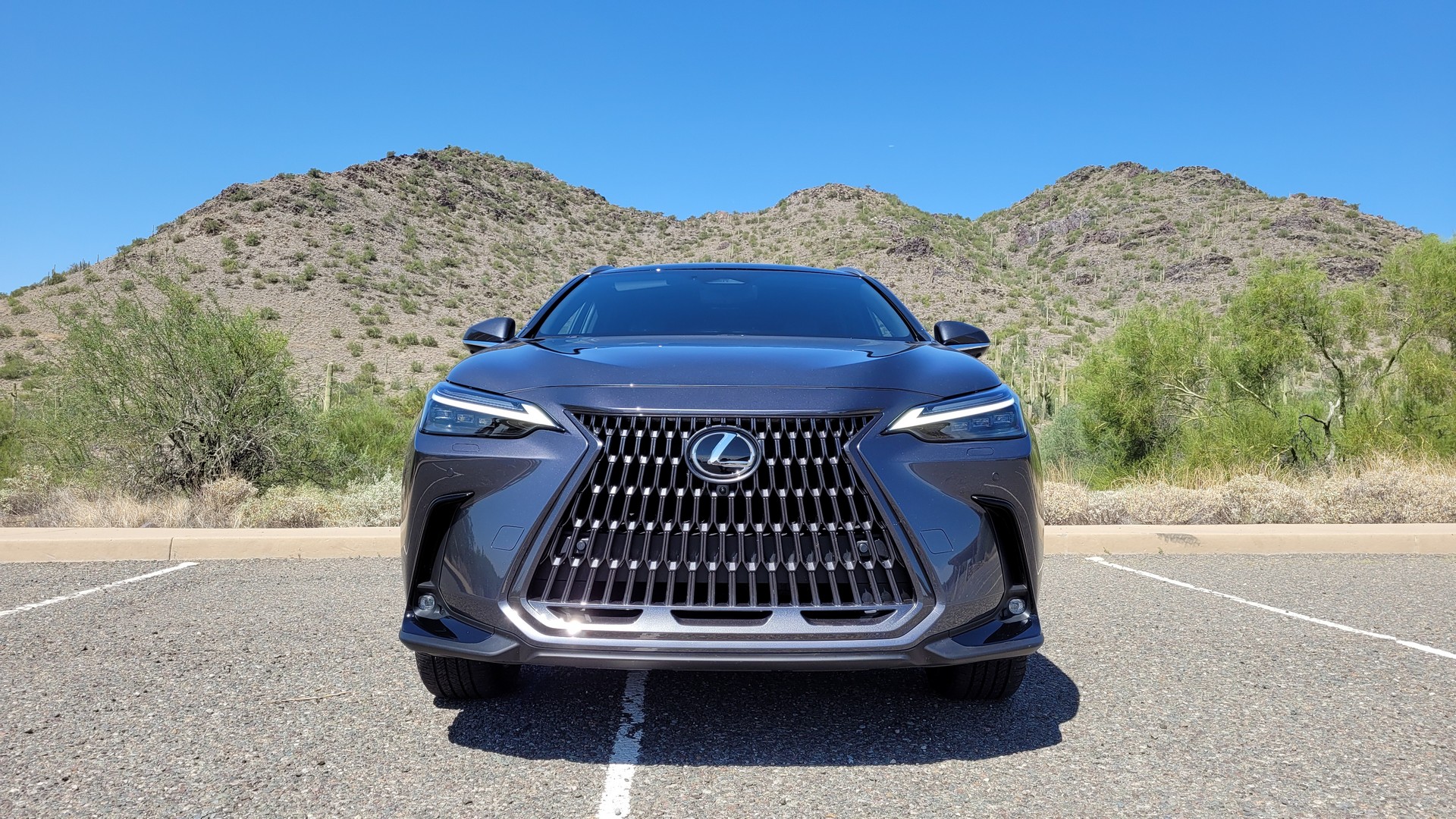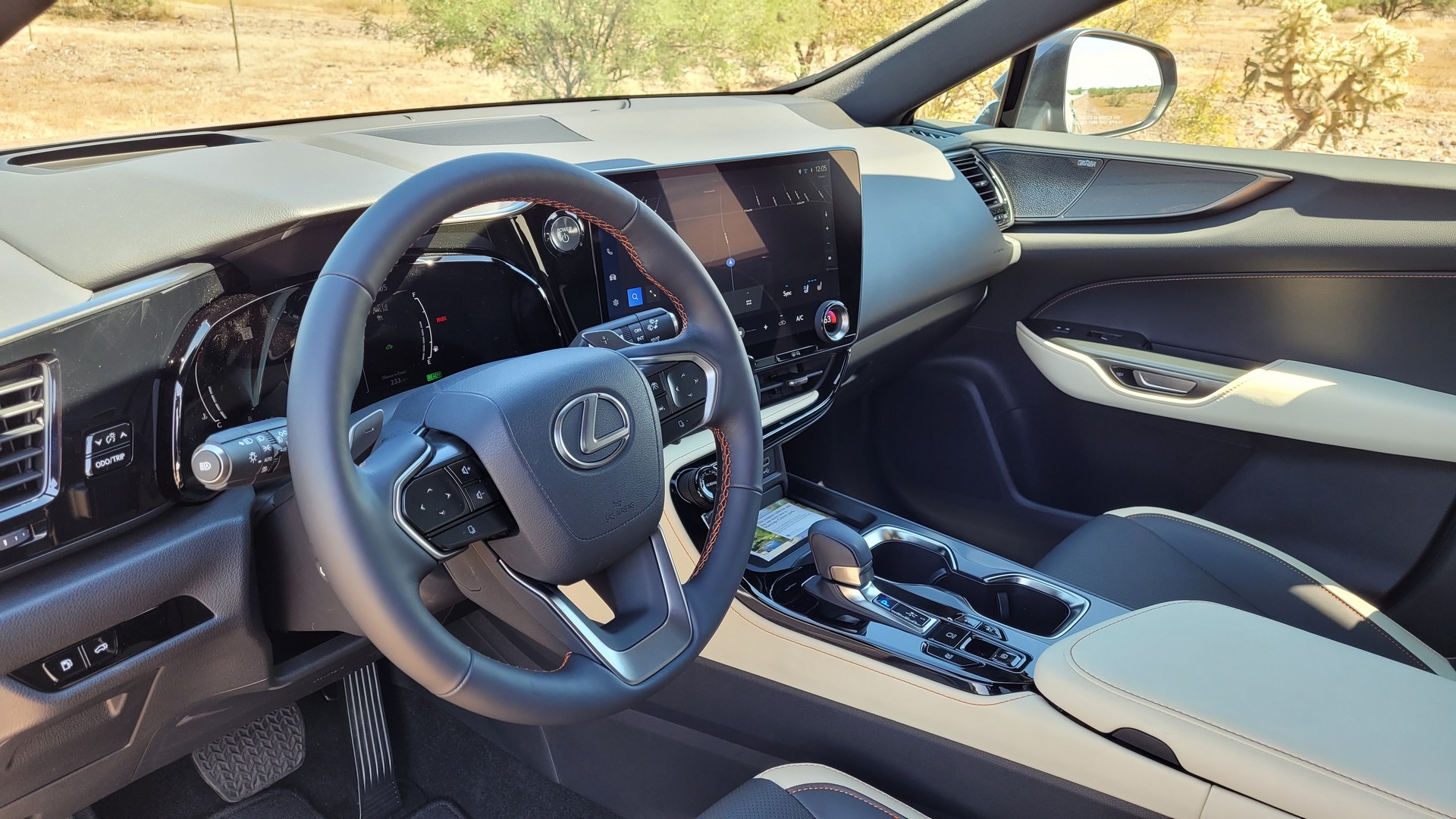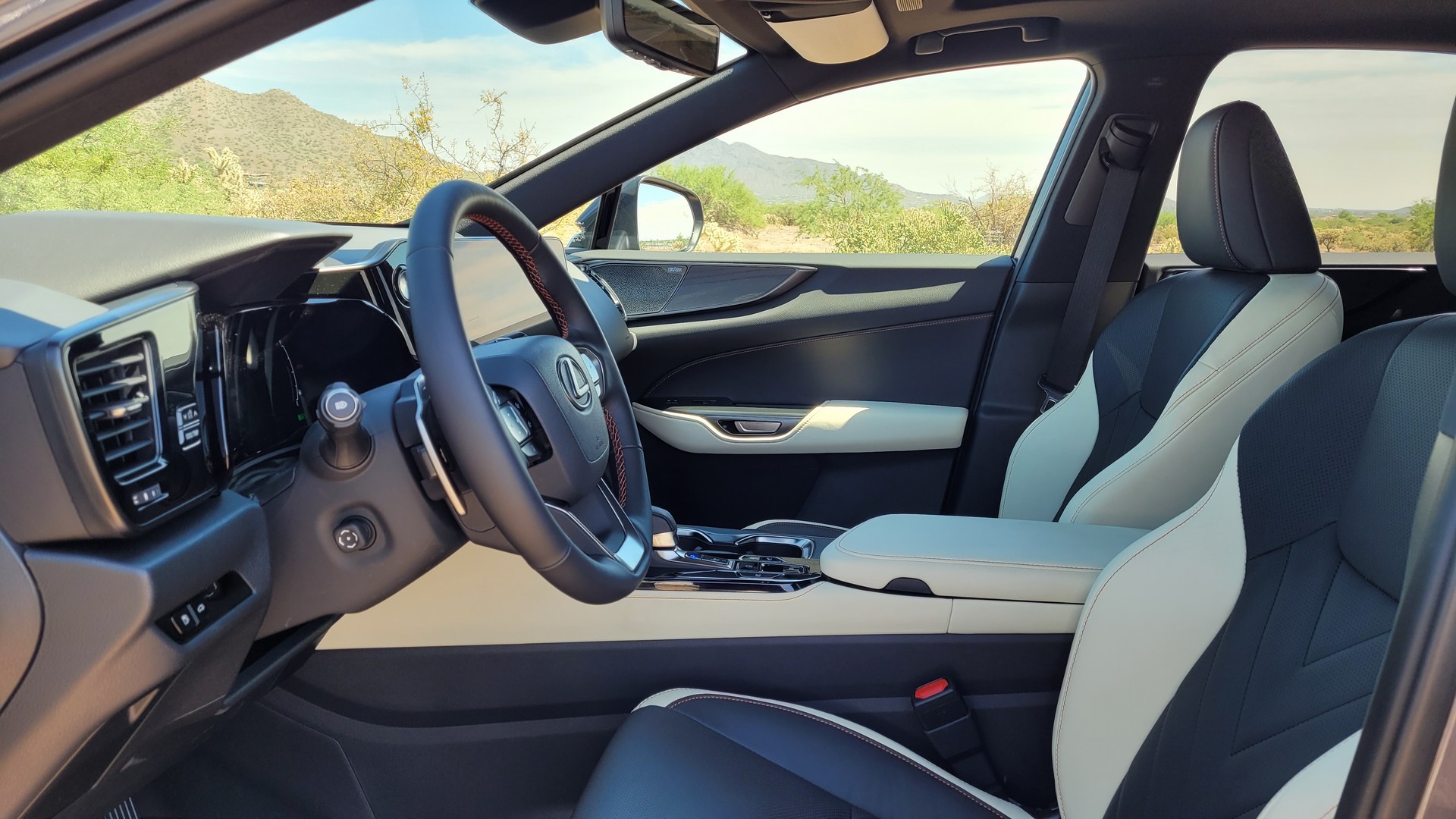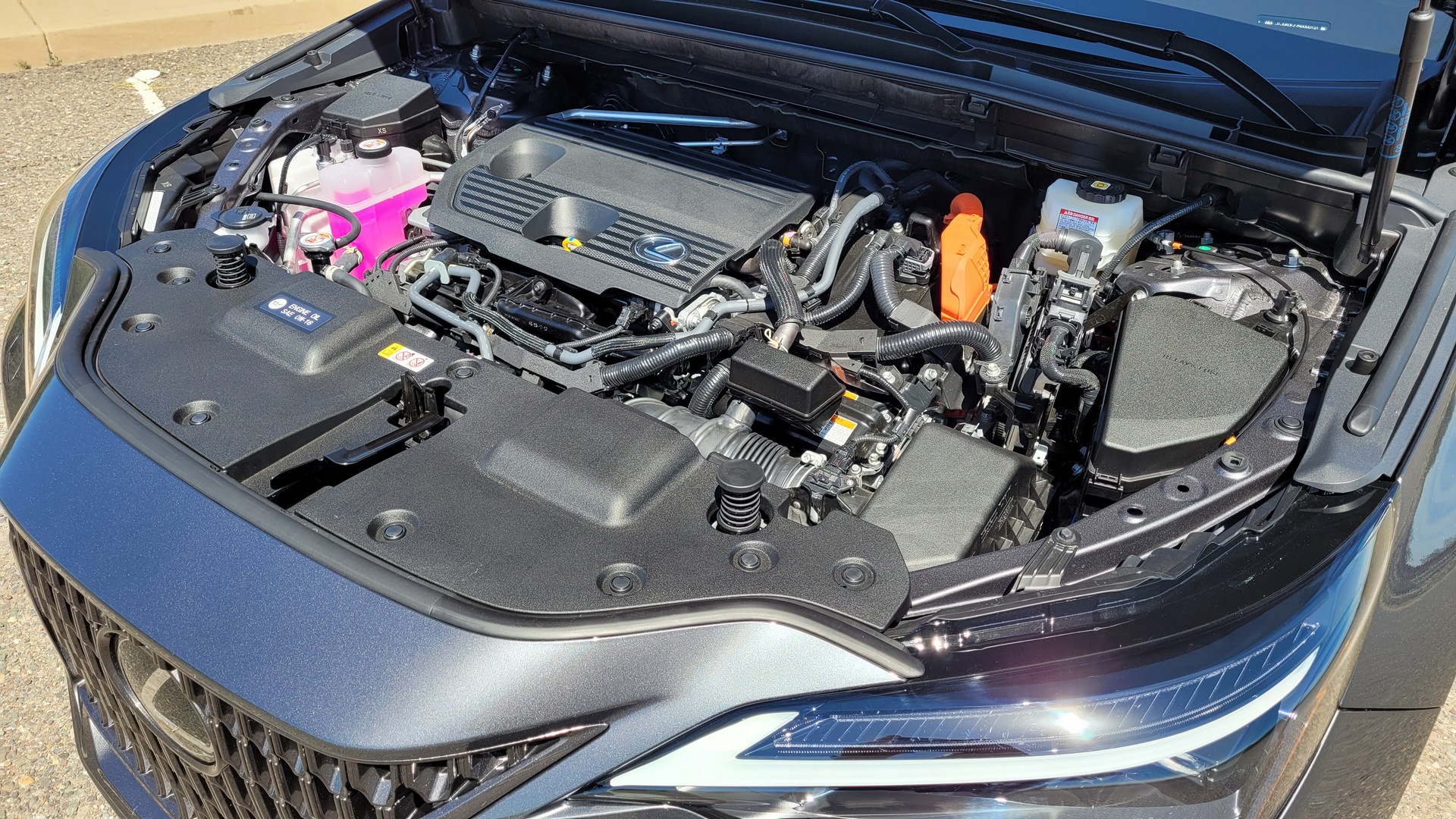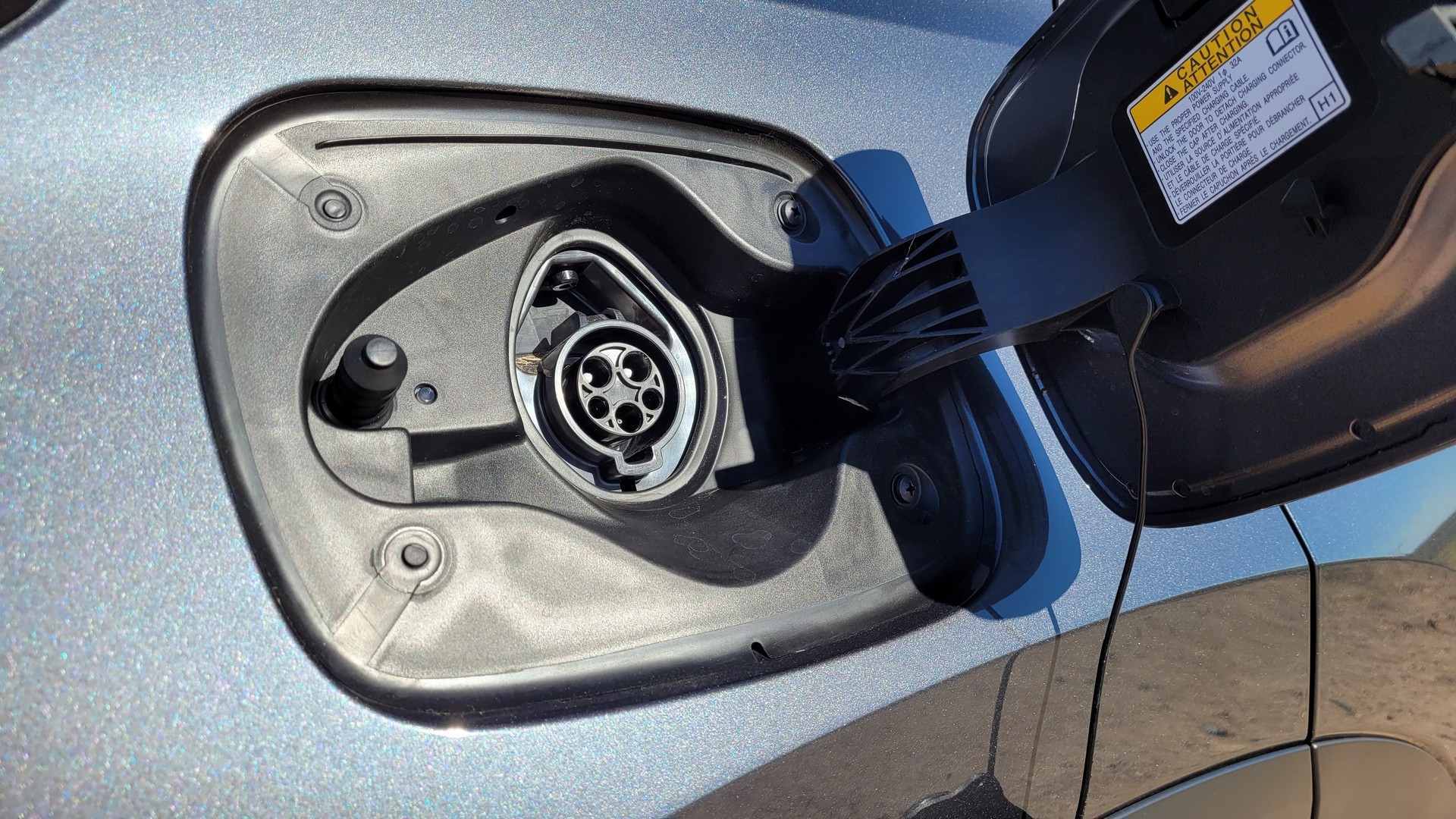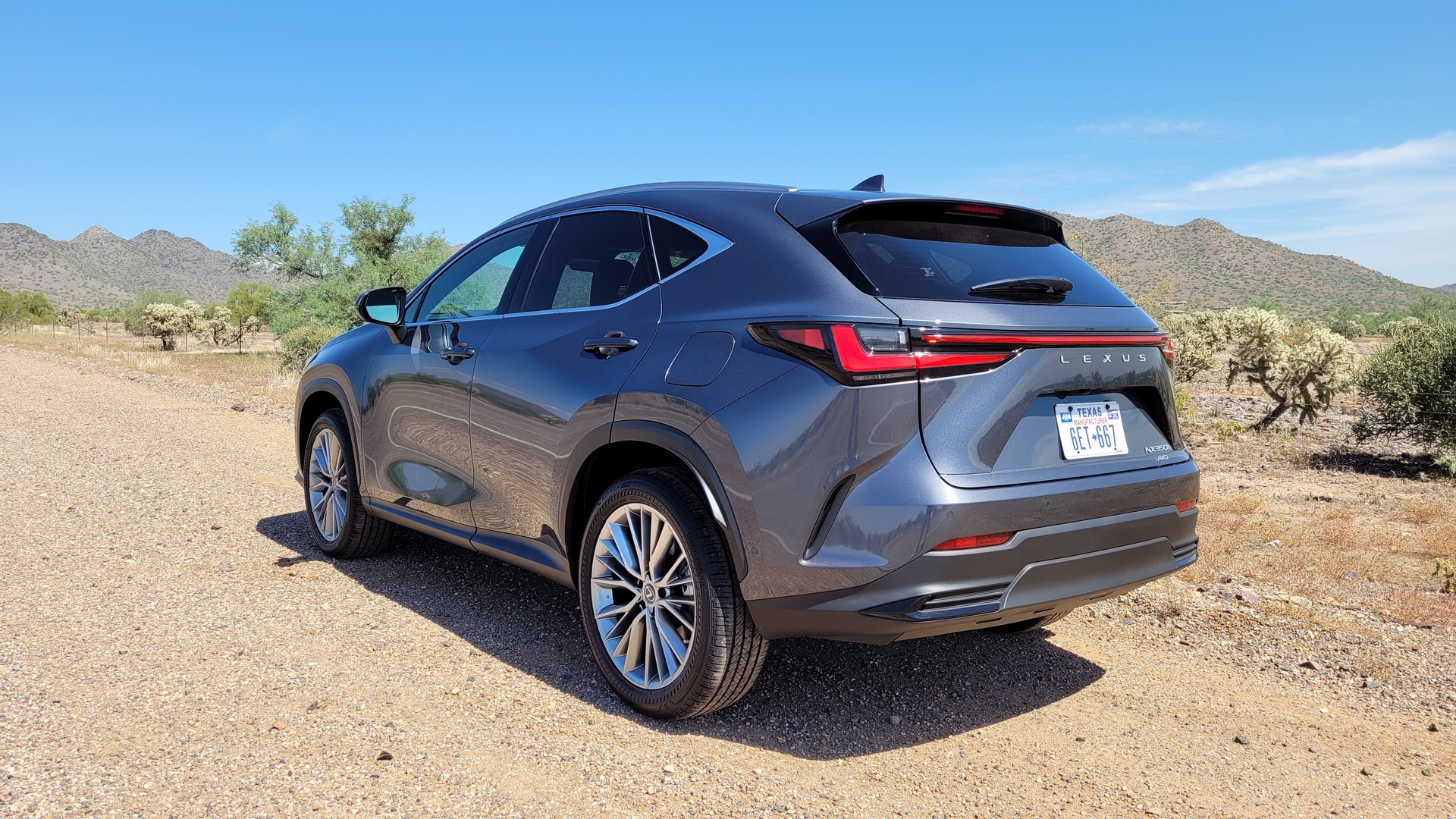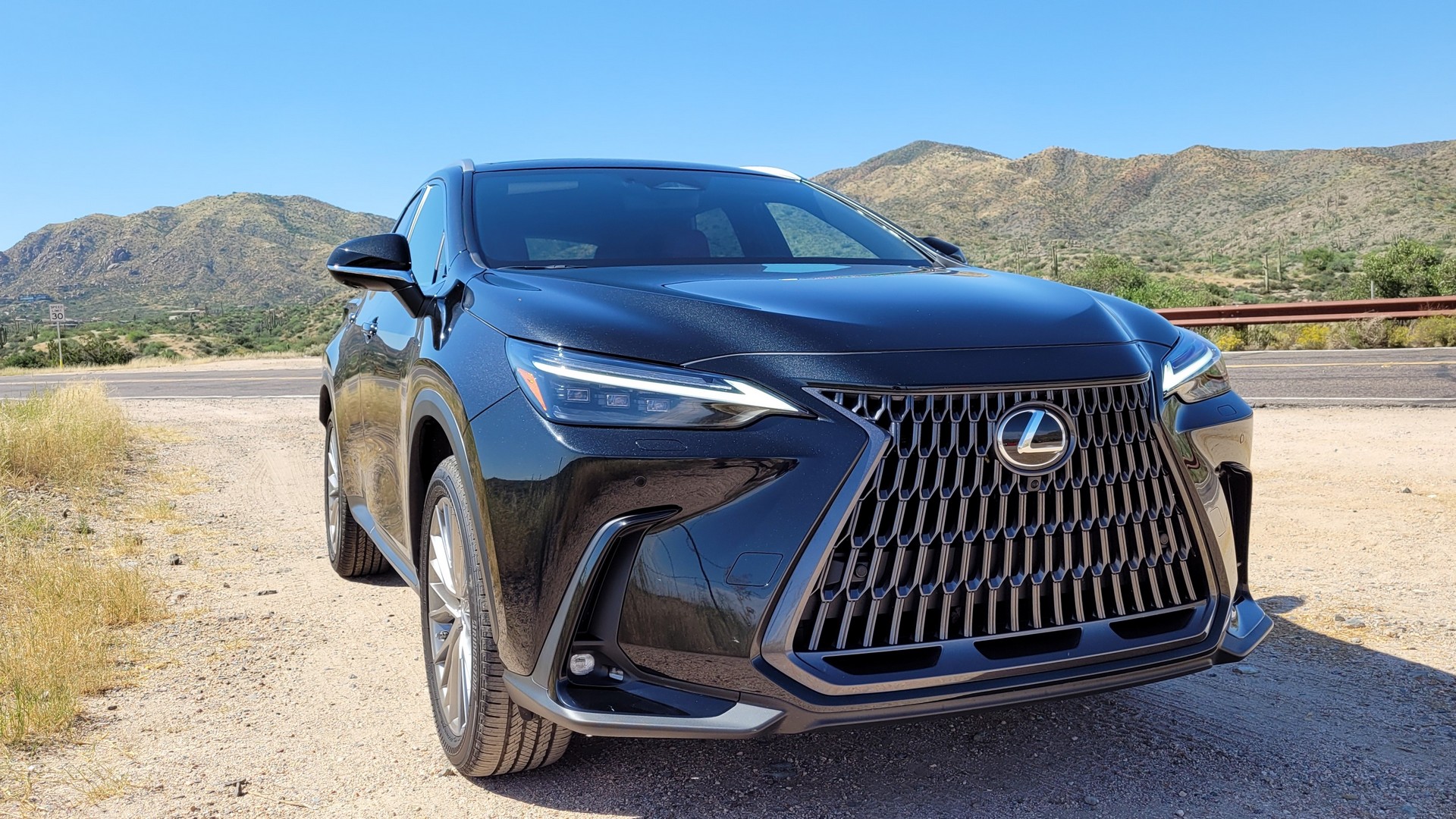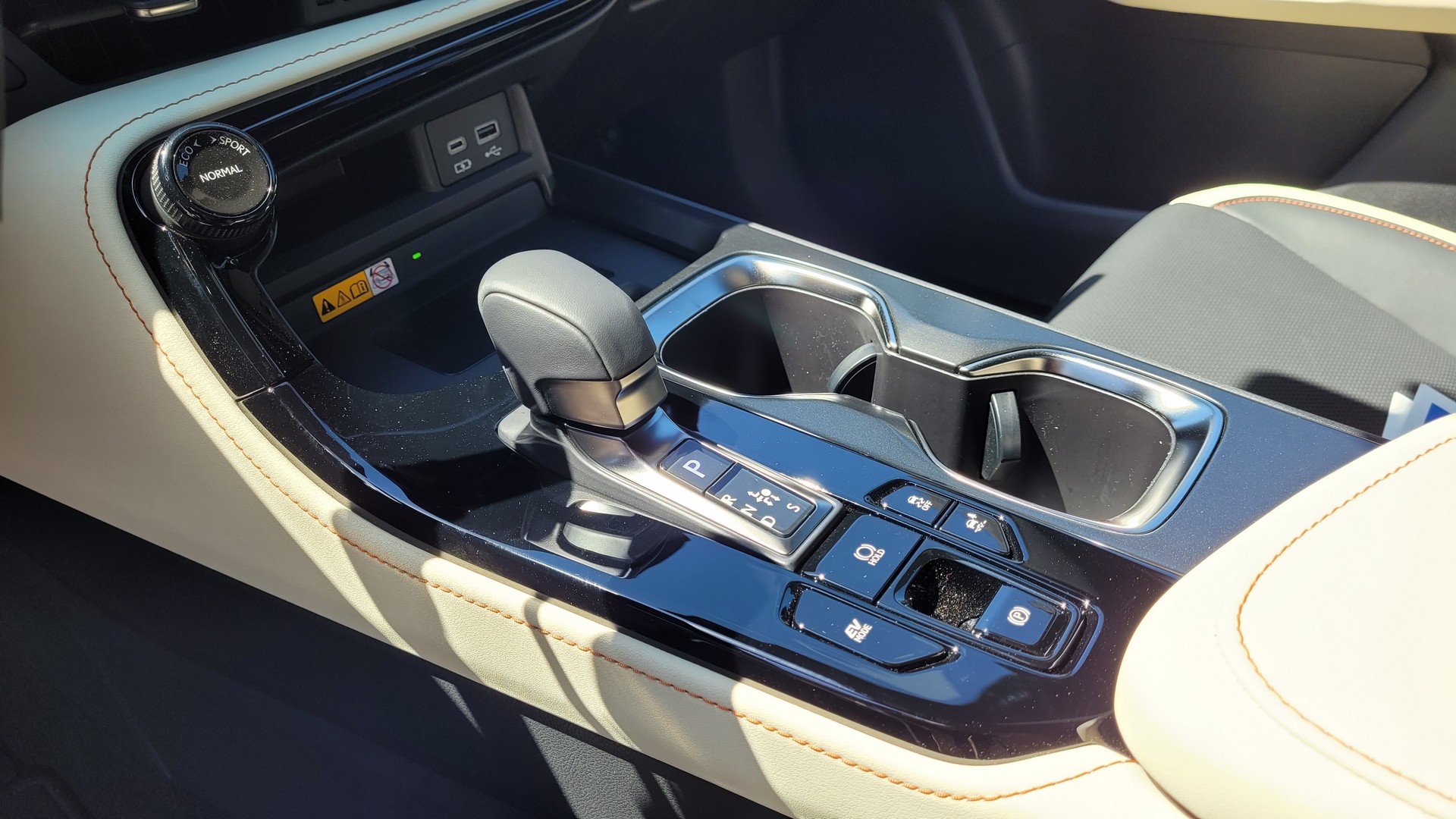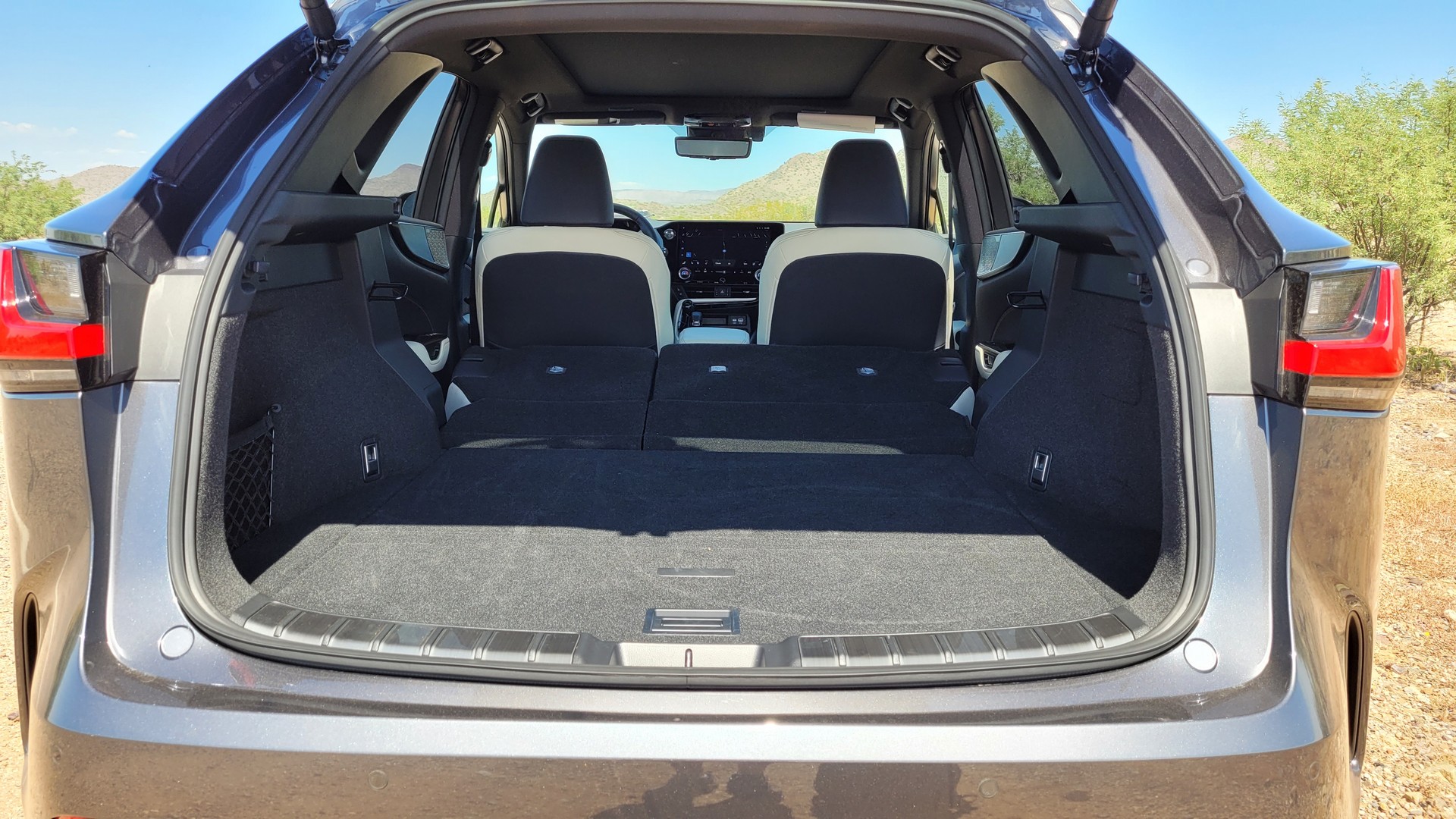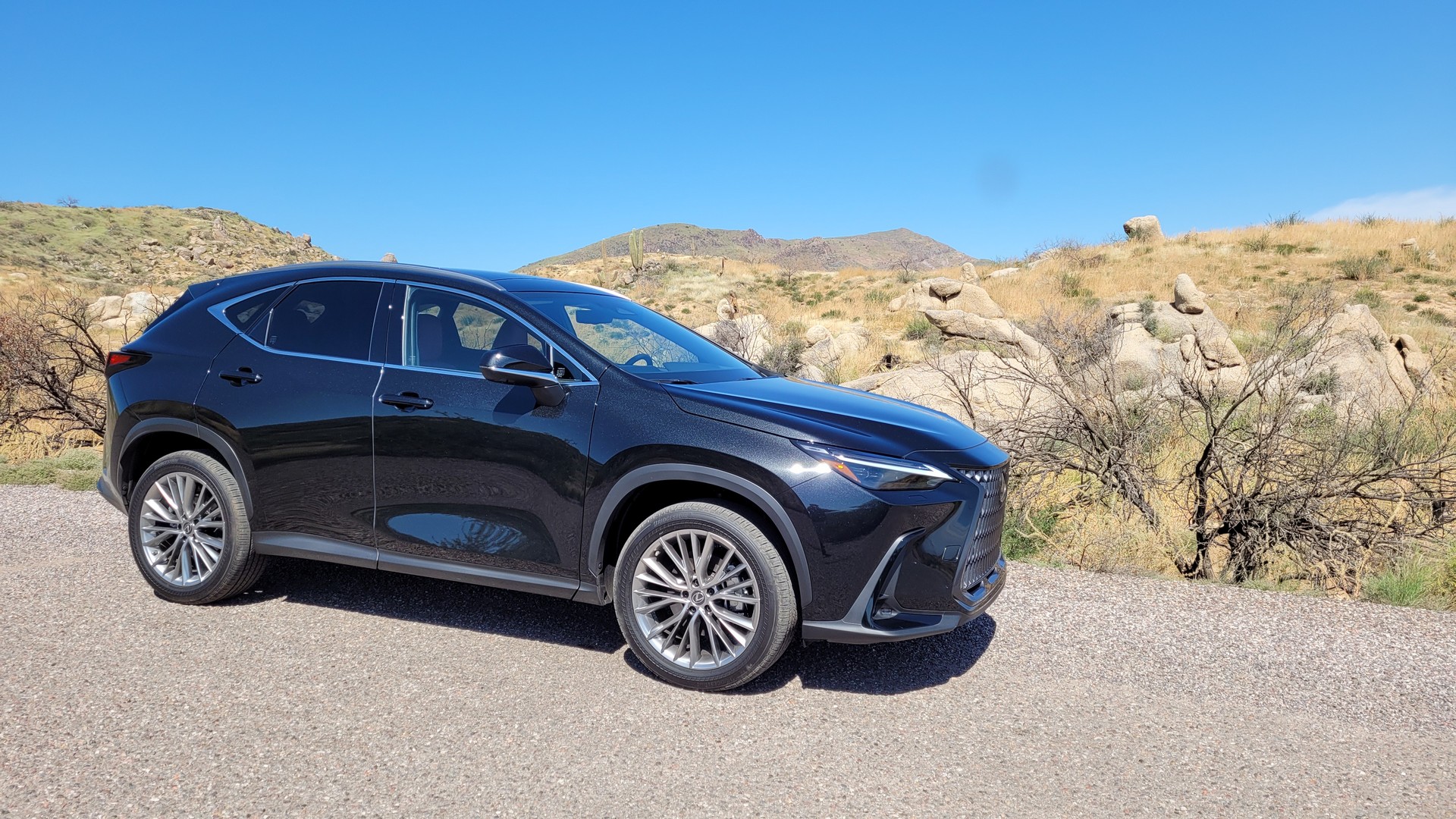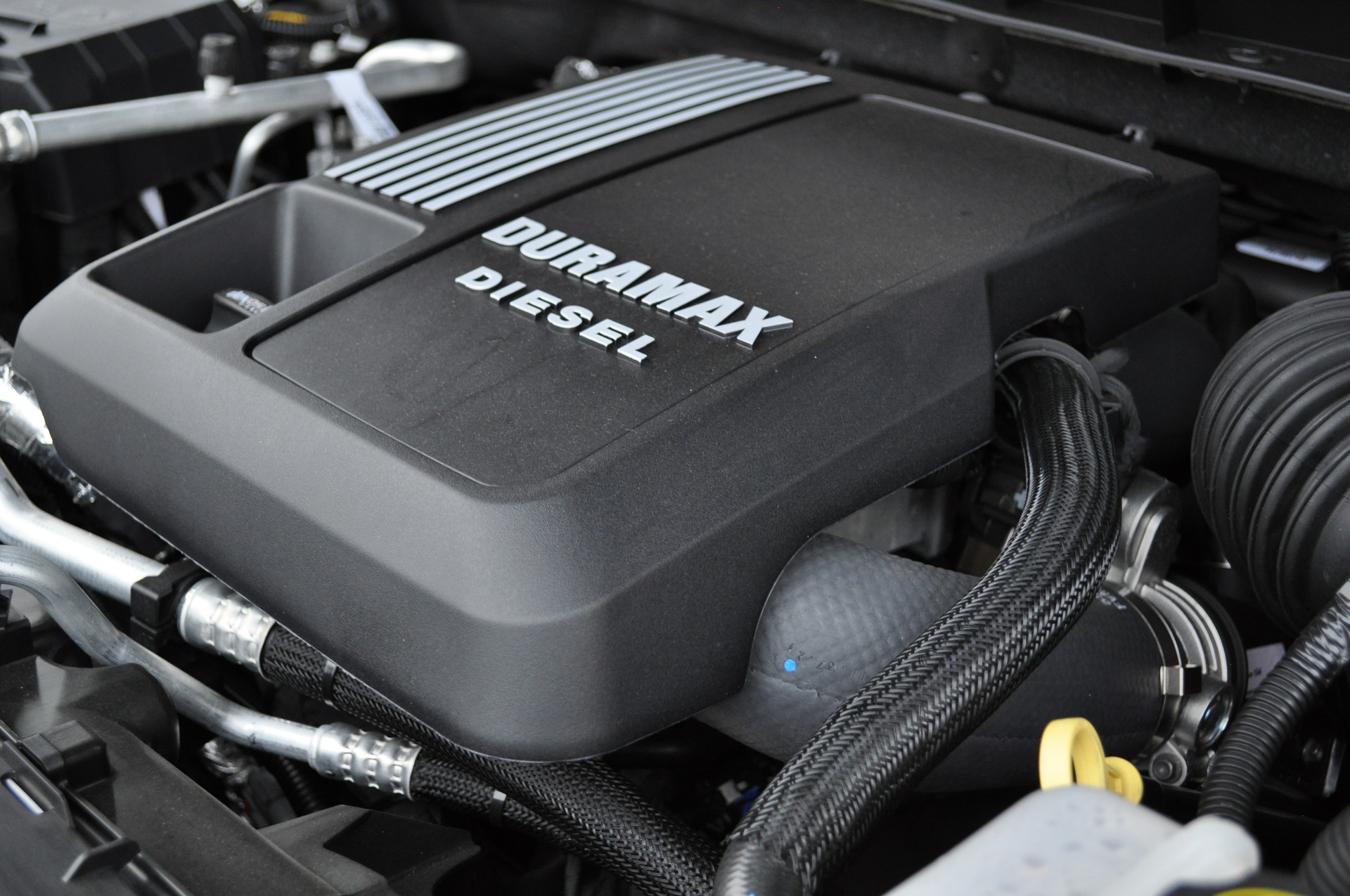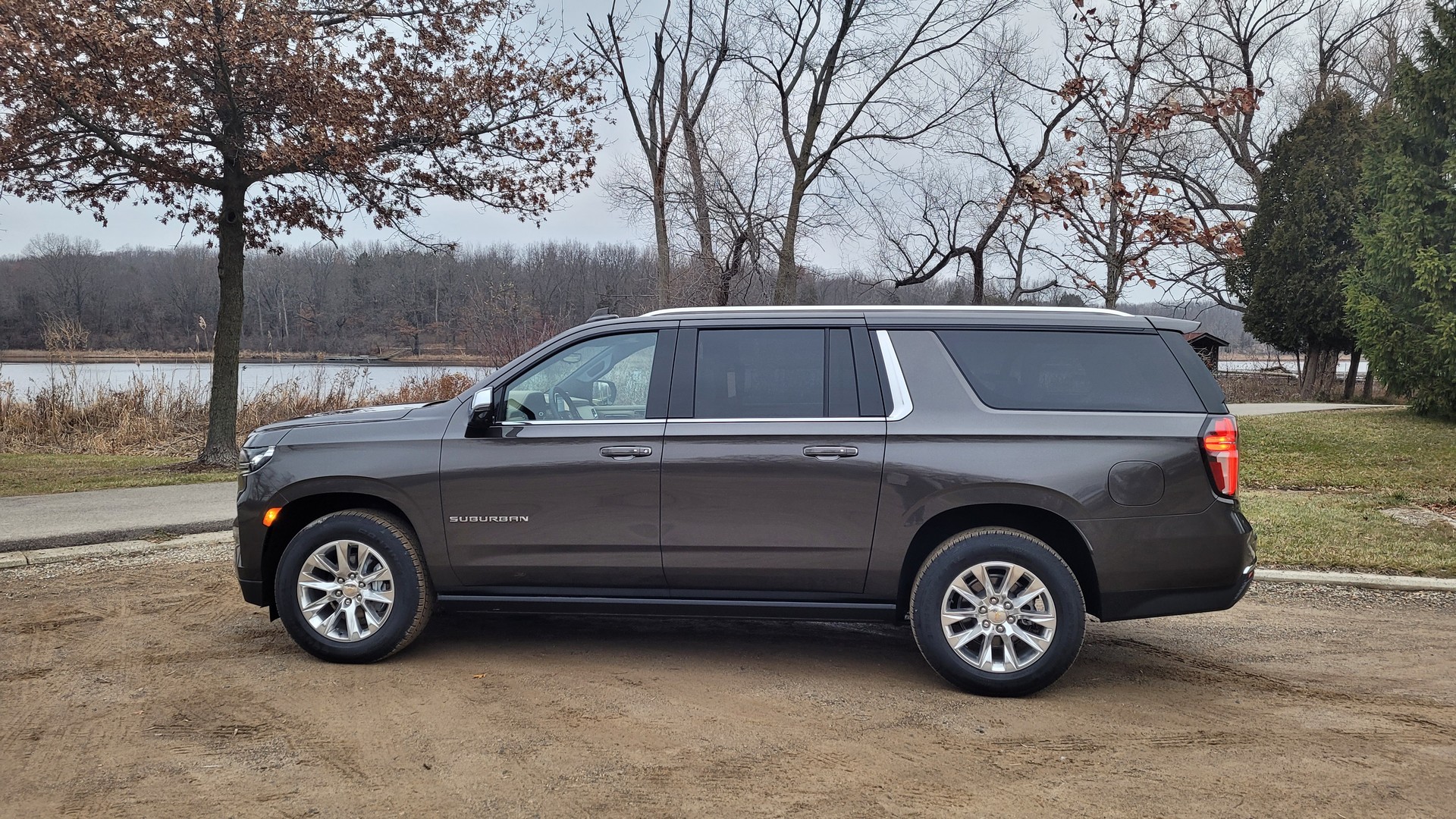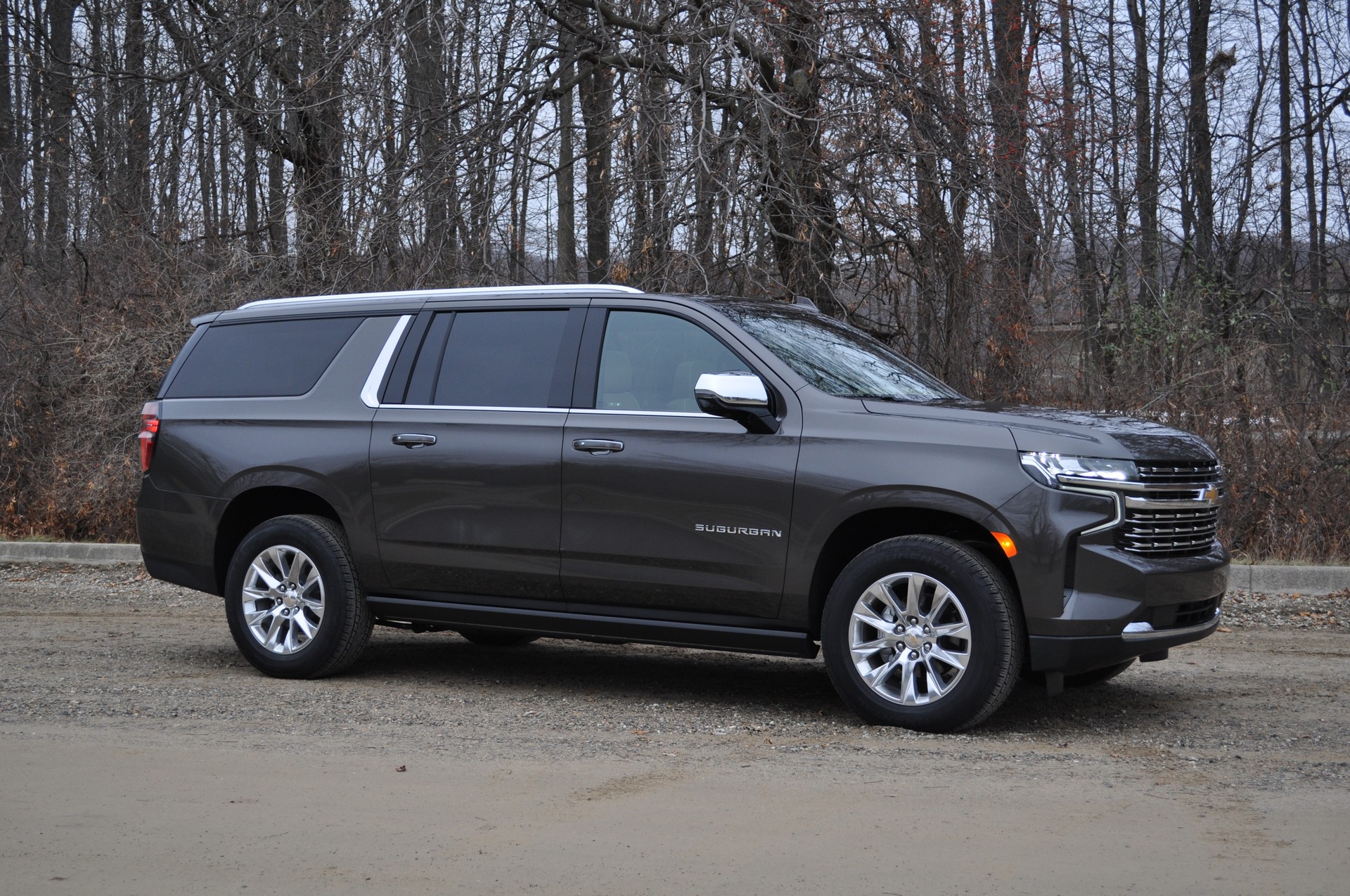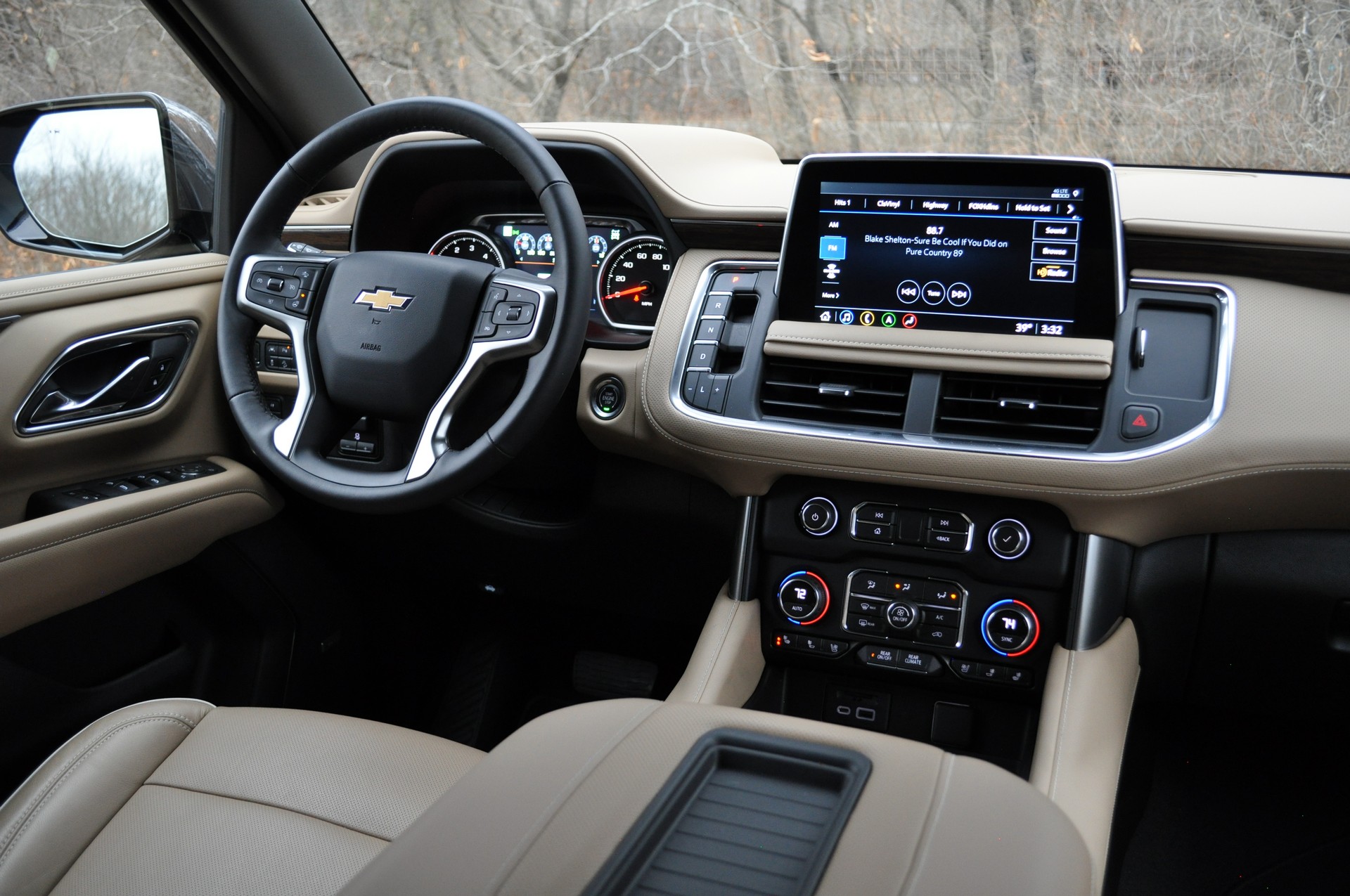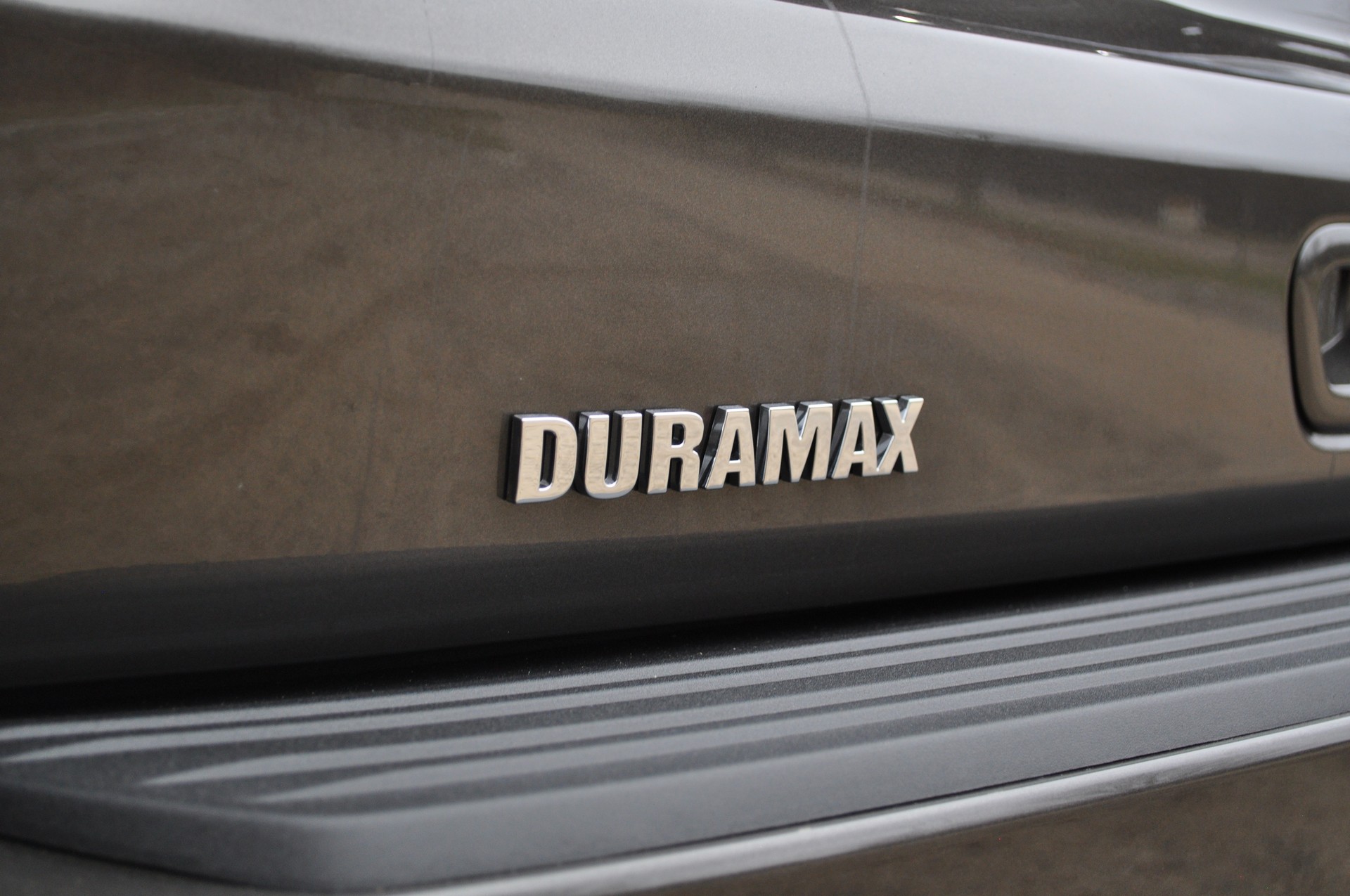Tag Archives: MimboloveFirst Drive

Lexus is renowned for comfort and reliability, but they have a bit of an image problem as they’re often viewed as a boring brand for old people.
The company desperately wants to change that and they’ve been making progress by offering sportier models with more stylish designs. That trend continues with the 2022 NX, which features an athletic appearance, a higher quality interior, and an infotainment system that no longer feels like it was designed by sadists.
We recently took the premium crossover for a spin around Scottsdale, Arizona and came away impressed as the model is an improvement over its predecessor, which is Lexus’ second best-selling vehicle.
An Evolutionary, But Refined Design
While the crossover is instantly recognizable, the 2022 NX features a refined design with streamlined bodywork as well as daytime running lights that are now integrated into the headlights. The latter change is a big improvement as the crossover no longer features Nike-like swooshes in the bumper.
That isn’t the only change as the controversial spindle grille has been revamped and now features “U-shaped blocks” to give it a three-dimensional appearance. It’s flanked by more pronounced air intakes and minimalist fog lights.
Moving down the sides, we can see an evolutionary design with sleeker styling and a familiar greenhouse. They’re joined by 18- or 20-inch wheels and new Digital Latches. The latter are operated by a button on the inside of the door handle and the handles themselves don’t move. This is echoed on the inside as the interior handles are replaced by a slender switch.
While it’s odd that Lexus didn’t ditch the door handles entirely, the Digital Latches are combined with Safe Exit Assist technology. It prevents the doors from opening if a vehicle or bicyclist is approaching from behind and could cause a collision with either an open door or someone exiting the vehicle. This is an interesting safety feature and Lexus was quick to point out you can manually open the doors if the battery is dead.
Getting back to styling, the rear end is a bit of a departure from its predecessor as the 2022 NX features full-width taillights and “Lexus” lettering instead of the familiar “L” logo. Buyers will also find a ventilated rear fascia and no visible exhaust tips.
In terms of size, the model measures 183.5 inches (4,661 mm) long, 73.4 inches (1,864 mm) wide and 65.8 inches (1,671 mm) tall with a wheelbase that spans 105.9 inches (2,690 mm). This means the redesigned crossover is slightly larger than its predecessor as length increases by 0.8 inches (20 mm), while the wheelbase grows an additional 1.2 inches (30 mm).
A Modern And High-Tech Interior
While the exterior design is evolutionary, the same can’t be said about the interior as it’s far more modern and high-tech.
The most noticeable change is the all-new Lexus Interface, which is a seismic shift from the convoluted infotainment systems of the past. Instead of forcing drivers to use touchpads or mouse-like controllers, it features a 9.8- or 14-inch touchscreen display that is optically bonded to help reduce glare.
We’ve covered the Lexus Interface in the past, but it’s a huge improvement as it has five times the processing power as their previous infotainment system as well as smartphone-like features and a new Intelligent Assistant. The latter listens for the “Hey/Hi/Hello/OK Lexus” wake word and can respond to an assortment of natural language requests. As a result, you can control the audio, climate control and navigation systems simply by speaking.
XXXXXXXXXXXXXXXXXXXXXX
While you have to say the wake word loudly for the Intelligent Assistant to start listening, it works wonderfully as the natural language processing is advanced and didn’t have any problems understanding requests such as “play country music” or “play a different country music station.” The Assistant also makes it a breeze to enter addresses into the navigation system as you simply speak them aloud and the system does the rest of the work.
On the topic of navigation, it’s cloud-based and uses Google point of interest data just like the 14-inch Audio Multimedia system in the 2022 Toyota Tundra. It also features an offline mode that automatically downloads applicable maps and services, before entering areas with spotty connections.
You can read more about the infotainment system in our earlier article, but we’ll point out some other highlights including user profiles, digital key technology, and support for wireless Android Auto and Apple CarPlay. The system also has built-in support for over-the-air updates as well as Amazon Music and Apple Music streaming.
Putting the infotainment system aside, drivers will find a new 7-inch multi-information display and an optional 10-inch head up display. Models equipped with the latter have customizable touch controls on the steering wheel. While the buttons themselves lack lettering, their pre-sets will be shown in the HUD when you move a finger over the controls.
Despite the focus on technology, Lexus hasn’t forgotten about luxury as the NX is outfitted with high quality switchgear, padded surfaces, and leather or NuLuxe upholstery which is available in a number of stylish two-tone designs. Customers will also find dark graphite aluminum, stippled black, black prism or black open-pore wood trim.
The crossover also comes standard with heated front seats, auto-dimming mirrors and a ten-speaker audio system. An assortment of options are available including a new panoramic moonroof, a digital rearview mirror, and a wireless smartphone charger. Customers can also get heated / ventilated front seats, heated rear seats, a 17-speaker Mark Levinson premium audio system, and a Thematic Ambient Illumination system which offers 14 themes and 64 colors.
After logging some seat time in four different NXs, it’s clear the crossover is a comfortable cruiser as the front seats are spacious and offer numerous power adjustments. The back seats are also pretty accommodating as they offer 36.1 inches (917 mm) of legroom and 38.5 inches (978 mm) of headroom, which was more than enough for this 6’ 2” reviewer.
Speaking of space, the model has a cargo capacity of 22.7 cubic feet (643 liters) and that’s an improvement of 5 cubic feet (142 liters). If you need more room, lowering the rear seats will increase the capacity to 46.9 cubic feet (1,328 liters). That’s a sizable decrease from last year’s model, which held 54.6 cubic feet (1,546 liters) of luggage, and it’s less than competitors such as the Acura RDX.
A Powertrain For Almost Everyone
The 2022 Lexus NX offers four different powertrains, including an all-new plug-in hybrid variant that mixes performance with efficiency.
Starting at the bottom, there’s a naturally aspirated 2.5-liter four-cylinder that produces 203 hp (149 kW / 206 PS) and 184 lb-ft (249 Nm) of torque. It’s connected to an eight-speed automatic transmission, which can be paired to an optional all-wheel drive system. In terms of performance, the front-wheel drive variant accelerates from 0-60 mph (0-96 km/h) in 8.6 seconds and has an estimated fuel economy rating of 26 mpg city, 33 mpg highway and 28 mpg combined. Adding all-wheel drive drops the 0-60 mph (0-96 km/h) time to 8.2 seconds, but it comes at a cost as the model’s estimated fuel economy rating drops to 25 mpg city, 32 mpg highway and 28 mpg combined.
While we didn’t test the base model, we did try out the NX 350. It features a turbocharged 2.4-liter four-cylinder with 275 hp (202 kW / 279 PS) and 317 lb-ft (430 Nm) of torque. The engine has a bit of turbo lag, but it’s paired to an excellent eight-speed automatic transmission and a standard all-wheel drive system. Thanks to the extra power, the dash to 60 mph (96 km/h) takes 6.6 seconds but it’s pretty thirsty as it has an estimated fuel economy rating of 22 mpg city, 29 mpg highway and 25 mpg combined.
Customers looking for something more eco-friendly can opt for the NX 350h, which has a 2.5-liter four-cylinder engine, an electronically controlled continuously variable transmission, a small lithium-ion battery, a dual-motor transaxle, and an electric motor that powers the rear wheels. While there’s a lot going on, the powertrain produces a combined output of 239 hp (176 kW / 242 PS) and is expected to return 41 mpg city, 37 mpg highway and 39 mpg combined. Those are some impressive numbers and the 0-60 mph (0-96 km/h) time of 7.2 seconds is 1.5 seconds faster than its predecessor.
Now in its fourth-generation, the hybrid system acts seamlessly and most consumers probably wouldn’t know they were driving a hybrid if you didn’t tell them. Furthermore, the NX 350h hits a bit of a sweet spot as it offers better performance than the NX 250 while also being cheaper and more economical than the turbocharged NX 350.
The big news for 2022 is the addition of a plug-in hybrid variant known as the NX 450h+. It borrows heavily from the Toyota RAV4 Prime and features a setup similar to the NX 350h, albeit with upgraded electric motors and a larger 18.1 kWh lithium-ion battery pack. This makes the model the most powerful NX at 302 hp (222 kW / 306 PS) and also the fastest as it only requires six seconds to hit 60 mph (96 km/h). More importantly, the model can travel approximately 37 miles (60 km) on electricity alone.
The electric-only range is good enough to cover the daily commutes of most drivers and owners can hold the charge for use in later parts of their journeys. It’s an impressive powertrain, but it comes at a steep cost of $55,560 before factoring in a $1,075 destination charge and a modest government tax credit. The model is also designed primarily for ZEV states, although customers will be able to order it elsewhere.
The NX 450h+ takes approximately 4.5 hours to recharge with a 240V connection and the standard 3.3 kW onboard charger, but that drops to 2.5 hours with the optional 6.6 kW charger. However, the model seems like a tough sell when you can get the Audi Q4 50 e-tron for $49,900 before a $1,095 destination charge and a $7,500 tax credit.
We asked a few Lexus officials about the German EV and they believe consumers aren’t ready to go electric yet. While the Q4 50 e-tron’s range of 241 miles (388 km) could indeed turn some people off, it seems like an amazing value compared to the plug-in hybrid NX.
Lighter And Sportier, But Still Comfortable
An all-new model needs an all-new platform and this time around the NX rides on the GA-K architecture, which also underpins the latest ES. Thanks to this change, the model offers a lower center of gravity, improved torsional rigidity, and better driving dynamics. The crossover is also lighter as some variants, such as the NX 350h, lose more than 210 lbs (95 kg) of weight.
It’s also worth mentioning the NX benefits from a new approach to vehicle development, known as the Lexus Driving Signature. Instead of each vehicle having its own unique characteristics – such as cushy for the ES and sporty for the IS – new models will have a more consistent feel that mixes comfort with sportiness.
If the NX is any indication of what the future holds, we’re in luck as the crossover drives much better than we were expecting. While the model features all the comfort and refinement one would expect in a Lexus, the NX is also dynamic and rewarding.
It’s certainly no sports car, but the crossover was a capable handler on the twisty mountain roads outside Scottsdale and was pretty enjoyable to boot. While the steering is a little light for my liking, there are three different driving modes and Sport mode adds a reasonable amount of heft.
The good news doesn’t stop there as the ride is geared towards comfort, but never feels overly soft. A lot of credit goes to the suspension, which features MacPherson struts up front and double wishbones out back. It soaked up minor imperfections with ease, although the roads we traveled on were relatively silky smooth.
The brakes are also capable of the task at hand as all NXs are equipped with ventilated discs that offer plenty of stopping power. They measure 12.91 inches (328 mm) front and 12.48 (317 mm) inches rear, which means they are larger than those found on the RDX.
Buyers looking for a more dynamic experience can opt for the F Sport trim, which adds an active variable suspension as well as performance dampers. Buyers will also find a handful of minor styling changes including a unique front bumper, a sportier grille and additional body-color components. They’re joined by black mirror caps, dark chrome window trim and 20-inch wheels with a gloss black finish. Customers will also find exclusive colors such as Obsidian, Ultra White and Ultrasonic Blue 2.0.
The F Sport upgrades extend into the cabin as the model has a sport steering wheel, dark graphite aluminum trim and special instrumentation. Other highlights include aluminum pedals and sport seats with perforated Black or Circuit Red NuLuxe upholstery.
Pricing Starts At $37,950
Despite being a significant improvement, the 2022 Lexus NX barely costs more than its predecessor. The entry-level NX 250 begins at $37,950 which is only $340 more than the 2021 NX 300.
Pricing climbs to $41,000 for the Premium variant and $44,100 for the Luxury version. Customers can also get all-wheel drive, which raises the cost to $39,550 for the base model, $42,600 for the Premium and $45,700 for the Luxury.
The AWD-only NX 350 begins at $41,550 and climbs to $44,600 for the Premium and $49,000 for the Luxury. Customers can also get the aforementioned F Sport variant for $46,650.
Moving onto the hybrids, the NX 350h AWD is actually $500 cheaper than the turbocharged model as pricing begins at $41,050. It climbs to $44,100 for the Premium and $48,500 for the Luxury.
Lastly, we’ll remind you the plug-in hybrid NX 450h+ starts at $55,560 in Luxury guise and rises to $56,900 for the F Sport Luxury version.
You can read details about their equipment here, but the 2022 NX comes standard with the Lexus Safety System+ 3.0 suite of driver assistance systems. It builds on the previous 2.0 system by adding Risk Avoidance Emergency Steer Assist, Left Turn Oncoming Vehicle Detection/Braking as well as Right/Left Turn Oncoming Pedestrian Detection/Braking. The model also gains improved Bicyclist Detection, Motorcyclist Detection, Crossing Vehicle Intersection Assistance, and Dynamic Radar Cruise Control with Curve Speed Management.
The new and improved features are joined by Road Sign Assist, Lane Departure Alert with Steering Assist, Intelligent High Beam headlights as well as the aforementioned Safe Exit Assist and digital rearview mirror. The model can also be equipped with Lane Change Assist, a Panoramic View Monitor, Advanced Park as well as Remote Park. The latter enables you to exit the vehicle and then use your smartphone to tell the NX to park itself.
A New Lexus For A New Generation
While there’s no shortage of luxury crossovers, the 2022 NX feels relatively sporty but is ultimately a comfortable utility that has a spacious and upscale interior. Buyers will also find an impressive powertrain lineup, which has an option for almost every need.
More importantly, Lexus finally has an infotainment system that we don’t dread using. The brand has been improving their systems over the years, but the new Lexus Interface feels like a game changer and its focus on speech means you can pay attention to the road, rather than digging through menus or searching for a particular radio station.
The company has also doubled down on luxury and safety as there are a host of new and improved features. Despite all these improvements, pricing has barely changed so buyers will be getting a lot more for their money. That’s good news and customers can expect the model to arrive in showrooms this December.
2022 Lexus NX 350h
2022 Lexus NX 350
2022 Lexus NX 450h+ F Sport
Picture credits: Michael Gauthier for CarScoops
It’s incredible to think that the VW Golf GTi, the one-time young upstart that helped define a completely new class of car and consign crusty clunkers like the MGB to the history books, is almost half a century old.
This year marks the GTI’s 45th anniversary and as VW buffs know, that’s all the excuse VW needs to roll out one of its commemorative GTIs, complete with more equipment and bespoke markings.
Previous anniversary models are now highly desirable (this 8-mile 25th anniversary car recently sold for £38,250/$53,100), but will future collectors be falling over themselves to buy the 45, and should you be doing the same now?
It Starts With the Clubsport
The Golf GTI has come in for a kicking from some quarters over the years for not being as fast or focused as some rival hot hatches. That’s a problem VW has solved in recent times with a two-tier line-up consisting of the regular GTI and the also-front-wheel drive GTI Clubsport; three-tier if you include the all-wheel drive Golf R.
Related: We Drive The 2022 VW Golf GTI Mk8 And 2021 Golf GTI Mk7 Back-To-Back To See What’s New
And it’s the Clubsport that forms the basis for the 45. That being the case, much of what’s different, what’s good and what’s bad about the anniversary car also applies to the Clubsport. So this review is as much about the merits of that car over the stock GTI. But before we dig into that, let’s take a look at what’s specifically different about the 45.
Most obviously, there are hexagon-motif and ‘45’ stickers along the doors, and the 19-inch ‘Scottsdale’ wheels are the same size as the Clubsport’s optional rims (18s are standard there) but of a totally different design. The roof and door mirrors caps are black, there’s a ‘45’ badge on the base of the steering wheel, and an angry-looking Akrapovic exhaust poking out from under the rear bumper.
The other difference is the price. In the UK the stock GTi starts at £34,175 ($47,500 converted at current rates; it’s actually only $29,545 in the U.S.). The Clubsport costs £37,925, however, and the Clubsport 45, £40,715. That makes the anniversary car even more expensive than the £40,025 Golf R which costs $43,645 in the U.S. Sadly, the Clubsport, and by dint, the Clubsport 45, isn’t coming to the U.S.
Power? A GTI, And Then Some
In the case of the latest Mk8 Golf, the GTi comes with a 242 hp 2.0-liter turbo four, while the Clubsport bumps that to 296 hp. Torque also rises, from 273 lb-ft to 295 lb-ft, dropping the zero to 62mph (100 km/h) time from 6.3 seconds to 5.6 seconds. While both of those cars are limited to 155 mph (250 km/h), the 45’s limiter is relaxed to 168 mph (270 km/h).
But, unlike the regular GTI, which gets a choice of two- and three-pedal transmissions, the Clubbie (and its 45 offshoot) comes only with VW’s seven-speed twin-clutch DSG. It also gets a slightly shorter final drive for snappier acceleration, a proper limited slip differential instead of the stock GTI’s brake-based fake LSD, a 10 mm lower ride height with more pronounced front camber, and revised rear springs and dampers.
DCC adaptive dampers are optional on all three GTIs, and were fitted to the 45 we drove. And as we’ll see, even so-equipped, the 45 is no cushy cruiser.
Check Please!
Open the door and the first thing you notice is the absence of the GTi’s trademark tartan seat upholstery. But the seats are the same and strike a great balance between support and comfort. They can also be moved through a seemingly infinite combination of adjustments meaning that, regardless of whether you like to sit right down on the floorpan, or with your head nuzzling the roof liner, you’ll not struggle to get comfortable.
Related: VW Golf GTI Clubsport Faces Off Against Golf GTI And Diesel Golf GTD On The Drag Strip
One thing we couldn’t get comfortable with is the infotainment system and steering wheel buttons. The Golf was always conservative and logical, inside and out, but VW really shook things up for the Mk8’s interior.
You get a handsome digital gauge pack and a central touchscreen on the dashboard. The gauge pack, I like, and the 911 PDK-style stubby DSG shifter, I don’t mind, though it would have been nice of VW had paired it with the latest Golf R’s jumbo steering wheel paddles.
But you barely have to brush the buttons on the wheel to activate some function you didn’t want, like the heated steering wheel. And the dumb slider controls for the temperature control below the main screen are infuriating, requiring far too much concentration to operate. Gimme an old fashioned rotary dial any day.
This focus on style over substance is a real surprise coming from VW. Maybe it’s just about distracting us from the disappointingly workmanlike lower console plastics.
A Genuine Civic Type R Rival?
The stock GTi makes a great daily driver, and is a fun steer. But it’s not hot Civic fun. I’m not convinced that the Clubsport is quite there either, but it comes damn close.
It doesn’t take more than a couple of yards to feel the difference in the steering. No, it doesn’t fizz in your hands with Lotus Elise levels of feedback, but it feels far sharper and more communicative than the stock GTi’s, encouraging to push harder than that car does.
There’s more bite at the front despite no change in tire section, and the Clubsport feels much more alert and interested in changing direction. You can feel the extra stiffness at the rear end, too. It gives the Clubsport a tighter feel, but it does come at the expense of some road comfort.
Related: VW ID.3 Proves A Tough Nut To Crack For The Mk8 Golf GTI
After playing with our car’s optional DCC dampers’ 15 settings we mostly settled at the comfort end of the scale. Because the shocks are adaptive, the system ups the damping force anyway when it senses you’ve got the red mist, without killing compliance. Selecting a stiffer setting feels superficially exciting, but is too harsh unless you’re on freshly laid pavement.
Interestingly though, the Clubsport gets a Nürburgring setting, named after the bumpy, hilly, German racetrack, that actually softens the suspension a touch to keep the tires in touch with the ground. It strikes a good balance, but it’s still a setting you’ll save for attacking your favorite smooth, empty road, rather than the commute to work.
More Power, More Mischief
Beyond the chassis improvements, the biggest difference between the GTI and Clubsport is the 2.0-liter engine’s extra 54 hp. Pull out to pass a chain of slower cars and you can really feel the benefit. It makes the Clubsport feel like a genuinely fast car, and just as punchy as the more powerful Golf R.
Which, in the dry, it probably is. Throw some moisture into the equation though, and the all-wheel drive R reminds you why sending 300 hp through four wheels is often a better idea than trying to squeeze it through two, particularly now that the R’s differentials are configured to make it feel less safe and understeery than before. It’s worth mentioning that the Clubsport gets the R’s big brake kit, and extra stopping power is one of the Clubsport’s standout features.
But what about the 45’s party piece, that Akrapovic exhaust? It certainly adds some volume to the Clubsport experience, but its not a very interesting noise, so I can’t say that it made it any more fun. For my money I’d stick with the stock pipes.
Verdict
And if you can’t justify the 45’s £2790 ($3875 converted) premium with the Akropovic exhaust, there’s not really much here to induce you to fork out for it, unless you’re a real VW nut.
No, we’d stick with the standard Clubsport, which genuinely does feel like it’s offering a very different experience to the standard GTi, if you can live without a manual transmission option. More power, a much more focused chassis, better brakes and subtly enhance styling make it a worthwhile upgrade from the base car, without adding so much to the bill that you’d be made not to dig a little deeper for the Golf R.
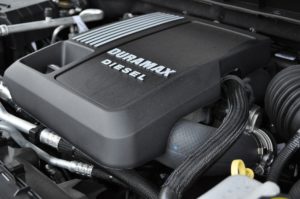
Diesel engines have been around for more than a century, but they’ve gotten a bad reputation thanks to a series of scandals.
This, combined with the shift to electric vehicles, has resulted in a number of diesel-powered models falling by the wayside. However, the truck segment has bucked the trend as diesel engines remain popular in heavy duty models and have even trickled down to their mainstream counterparts.
General Motors is going one step further as the 2021 Chevrolet Tahoe / Suburban, GMC Yukon and Cadillac Escalade will be offered a 3.0-liter Duramax turbodiesel inline-six. This is an interesting move as it’s the only diesel in the segment.
We recently spent some time with the diesel-powered Chevrolet Suburban and it’s clear the engine is a welcome addition to the lineup.
Don’t Let The Horsepower Rating Fool You
The 3.0-liter Duramax turbodiesel inline-six produces 277 hp (207 kW / 281 PS) and 460 lb-ft (624 Nm) of torque, but that doesn’t sound like much when compared to the 5.3- and 6.2-liter V8s. The former churns out 355 hp (265 kW / 360 PS) and 383 lb-ft (519 Nm) of torque, while the latter develops 420 hp (313 kW / 426 PS) and 460 lb-ft (624 Nm).
While the diesel looks underpowered on paper, it’s more than adequate to propel the Suburban which weighs 6,072 lbs (2,754 kg) with four-wheel drive. Thanks to the copious amount of torque, the model accelerates at a reasonable pace.
It’s been a few months since we tested the GMC Yukon AT4 with the 5.3-liter V8, but the diesel engine seems to offer similar performance in the real world. The diesel is likely a bit slower, but you never get the feeling you’re driving an underpowered school bus. That being said, you might wish for some extra oomph when it comes time to merge onto the highway.
Surprisingly Efficient
Diesel engines are known for their efficiency and the Duramax doesn’t disappoint as the Suburban returns 21 mpg city, 27 mpg highway and 23 mpg combined with rear-wheel drive and 20 mpg city, 26 mpg highway and 22 mpg combined with four-wheel drive.
To put those numbers into perspective, the 5.3-liter V8 Suburban is rated at 16 mpg city, 20 mpg highway and 18 mpg combined with rear-wheel drive. That drops to 15 city, 19 mpg highway and 17 mpg combined with four-wheel drive.
Crunching the numbers, that’s a difference of 5 mpg city, 7 mpg highway and 5 mpg combined for both models. Those are sizable gains and it’s kind of crazy when you think about a three ton SUV returning 27 mpg.
In our short time with the Suburban, we averaged 24.4 mpg with a mix of city and highway driving. That’s pretty impressive and the number would be higher if we hadn’t left the vehicle idling while taking photos and video, although a start/stop system helps to save fuel.
The Ultimate SUV For Towing?
Diesel engines are great for towing and the Suburban seems like an ideal vehicle for hauling your family, equipment and a boat up north for a weekend at the lake. In terms of numbers, the model has a maximum towing capacity of 8,000 lbs (3,629 kg) and a max payload of 1,625 lbs (737 kg). If that’s not enough, the Tahoe ups that to 8,200 lbs (3,719 kg) and 1,717 lbs (779 kg).
While the gasoline-powered models can tow more, the diesels have a standard exhaust brake which can be accessed by using tow-haul mode. It’s designed to give drivers more confidence when towing, especially downhill.
A Civilized Diesel
The diesel engine largely carries over from the Silverado, but engineers made several modifications for use in the Tahoe and Suburban. Among the changes are revised software and “noise abatements” to keep the cabin quiet.
Speaking of the latter, the engine is hushed even outside the vehicle. While it’s unmistakably a diesel, it’s not the ‘wake your neighbors’ type found in older heavy duty trucks. The noise is less pronounced in the cabin and you can’t even tell it’s a diesel at highway speeds.
An Affordable Upgrade
While diesel engines are typically expensive, the Duramax only costs an additional $995. On the range-topping High Country trim, which comes standard with the 6.2-liter V8, it actually saves buyers $1,500. That’s pretty reasonable and it makes the diesel a tempting option, especially when compared with the 5.3-liter V8.
The diesel might not appeal to everyone, but it’s an interesting addition to the lineup and offers impressive fuel economy ratings. It also delivers decent performance, quick start ups and all the capability the Suburban is renowned for.
You can read more about the 2021 Tahoe and Suburban in our earlier review.
[embedded content]

